Top Dutch Solar Racing stranded just before the finish line, but returns proudly
After six intense days and more than 2,500 kilometers in the Australian outback, the Bridgestone World Solar Challenge has come to an unexpected end for Top Dutch Solar Racing. Despite the team's tremendous perseverance, Green Falcon was unable to reach the finish line on its own power this time.
From August 24 to 31 August this year, the student team Top Dutch Solar Racing participated in the Bridgestone World Solar Challenge in Australia. This page will keep you up to date on the latest developments during and around the race.
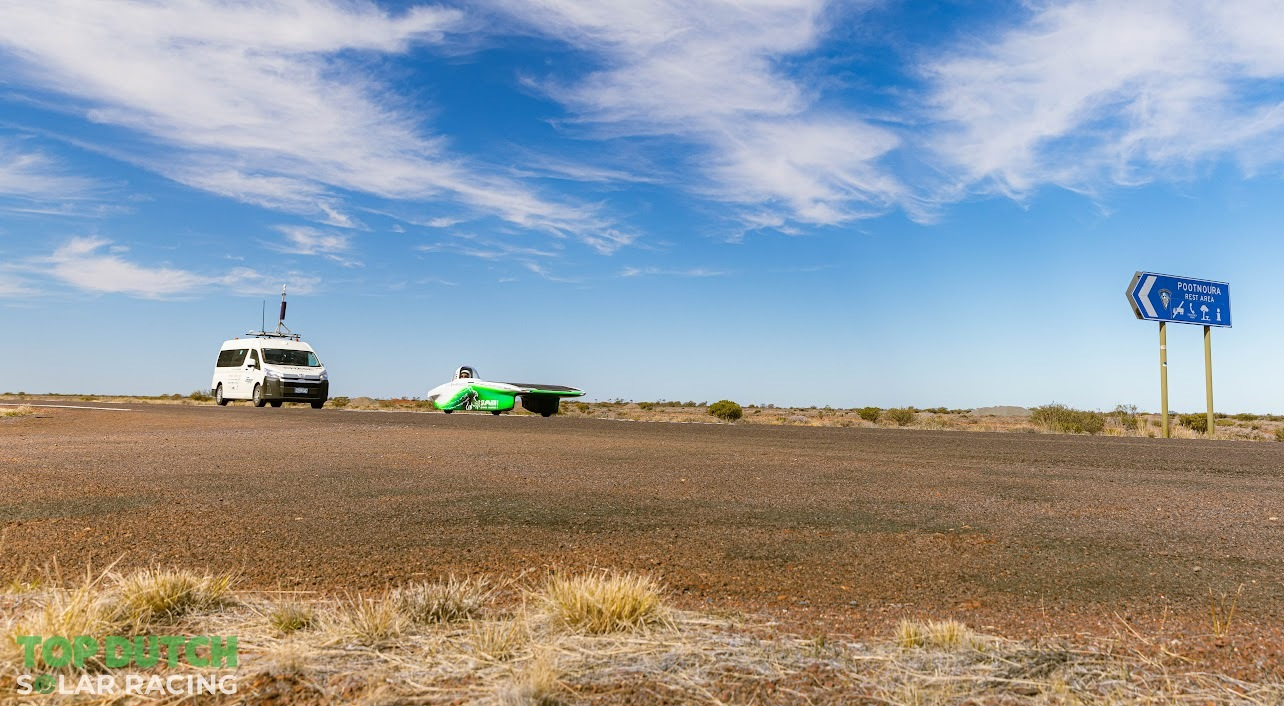
Top Dutch Solar Racing stranded just before the finish line, but returns proudly
The final day of racing began hopefully. After a turbulent sixth day, with a driving ban due to heavy rainfall, the team seemed to be well on its way to Adelaide again. Until Green Falcon encountered a road undergoing maintenance with deep potholes. One of them proved fatal: the rear suspension connection broke. This made it impossible to continue driving.
Disappointed but with their heads held high, the team had to have the solar car towed to the finish line. There, the students were greeted with warm applause from other teams, a sign of respect for their dedication and achievements. The project had already suffered several setbacks this year, but the group always managed to overcome them. This time, however, the technology failed them.
Although the race ended disappointingly, Top Dutch Solar Racing looks back with pride on its achievements and the learning experience. The adventure in Australia has once again proven how students from the northern Netherlands work together on innovation, technology, and perseverance at a global level.
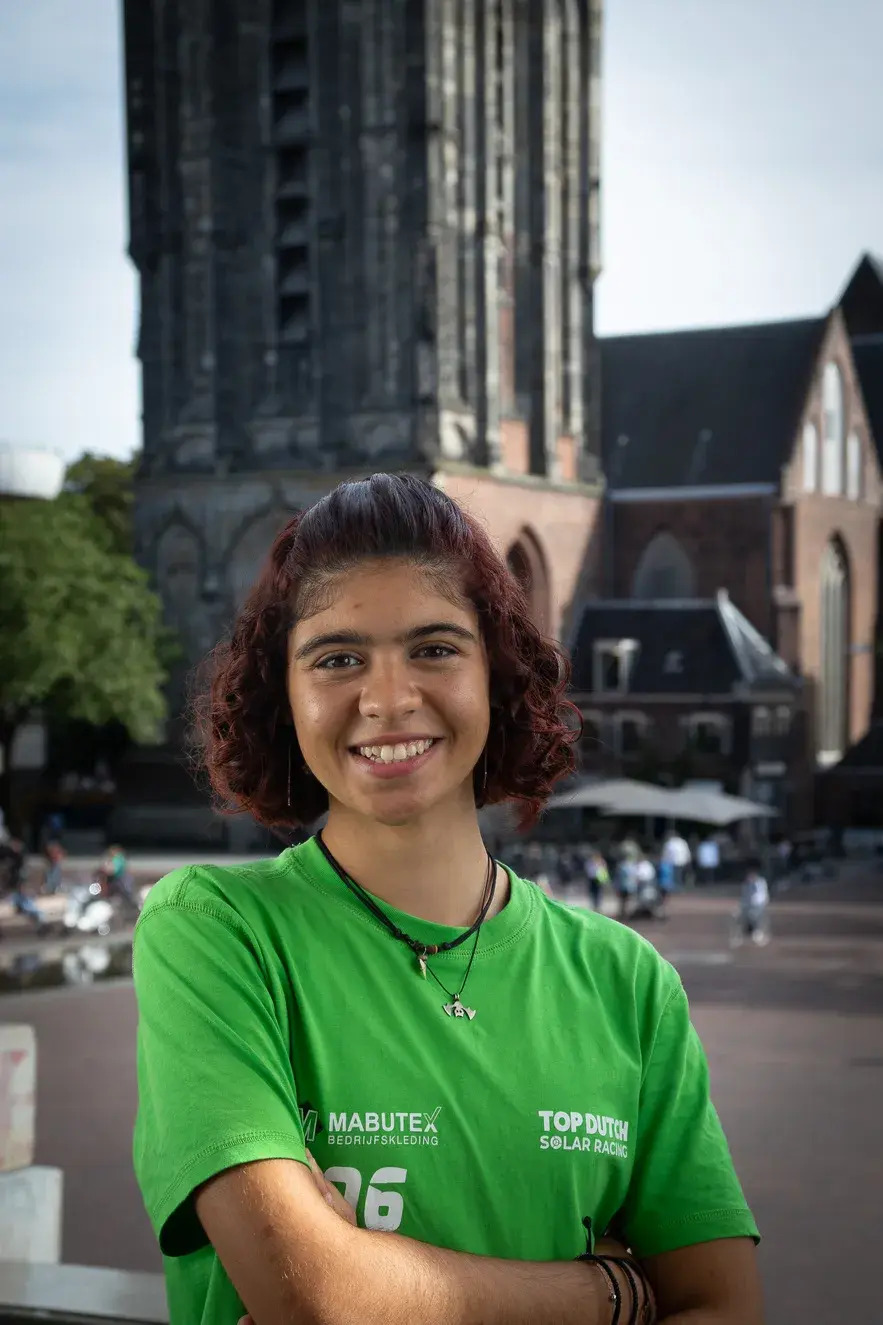
UG student joins communications team
In addition to technology, communication plays an important role in the project. Anthi Georgiadou, a Bachelor's student in Computing Science at the University of Groningen, is part of the communications team. She develops social media posts and graphic designs and uses her camera to capture the journey and challenge in impressive fashion. Thanks to Anthi and the rest of the communications team, audiences worldwide are given a unique insight into the achievements and adventures of Top Dutch Solar Racing.
You can find the previous updates below
21 August | Final test before the start
21 August | Final test before the start
The team has already been in Australia for almost two months preparing for the Bridgestone World Solar Challenge. A lot has happened in that time.
First milestones
The arrival of the flight case containing the solar car was an important moment. The car has now been officially certified for use on public roads, both in South Australia around Adelaide and in the Northern Territory up to Darwin. The first kilometres have also been completed during the so-called “trip up”: a dress rehearsal in which the race conditions are simulated as closely as possible. This gave the team members a taste of driving and camping in the vast Australian outback.
Rigorous inspections
Alongside testing and driving, the team also had to demonstrate to the organisers that the car is completely safe and complies with all technical regulations. During this scrutineering process, the car is examined in detail — from electronics to mechanics. It is a time-consuming and demanding procedure, but essential for participation.
Strategy from Groningen
In addition to the technical preparations, strategy plays a crucial role. Two UG students are taking the lead here: Timo Jolman, a bachelor’s student in Artificial Intelligence, and Lorenzo Zambelli, a master’s student in (Applied) Mathematics. Together with their team, they analyse how much solar energy is collected, how much can be used, and how fast the car can drive without overburdening the battery. Using their own weather station, they closely track cloud cover and forecast conditions.
From the “Chase” — a support car following directly behind the solar car — the strategy team calculates in real time the optimal speed and the expected end point of the day. In this way, they literally set the pace and the course for the Green Falcon.
The final stretch
Preparations were not without setbacks: the flight case was delayed, and the shipping container with camping gear will only arrive after the challenge. This meant a great deal of improvisation, but the logistics team continually found creative solutions to keep the project moving forward. All those efforts are now paying off as the solar car drives across Australian roads with spectacular landscapes as its backdrop.
At present, the team is working towards the next crucial step: the dynamic scrutineering at Hidden Valley Raceway in Darwin. This is a test session in which the driver must demonstrate various manoeuvres with the car — such as a figure of eight, a slalom, and also a hot lap. The result of this hot lap determines Top Dutch Solar Racing’s starting position in the race.
During testing, the car has already achieved a new top speed, well above 100 km/h. The exact figure remains a secret for now, since the competition is watching closely. On Saturday, the official hot lap will take place, and on Sunday the real challenge begins: a race of more than 3,000 kilometres right across Australia, powered entirely by the sun.
25 August | Team secures second starting position and keeps pace in the Outback
25 August | Team secures second starting position and keeps pace in the Outback
The northern Dutch student team Top Dutch Solar Racing has made an excellent start in the Bridgestone World Solar Challenge (BWSC). During the hot lap at the Darwin circuit, driver Daan Bruger recorded an impressive time of 1:56.20, securing second place on the starting grid – with only the German team from Aachen going faster. In total, 34 teams are competing in this 3,000-kilometre race right across the Australian desert.
After successfully completing the dynamic tests, which assessed the stability and manoeuvrability of the solar car, the Green Falcon was cleared to take part in qualifying. On the opening day of racing the team finished seventh, before dropping back to tenth place on day two. The differences remain marginal, however, as each team applies its own race strategy. The team has now passed Barrow Creek and is camping near Alice Springs.
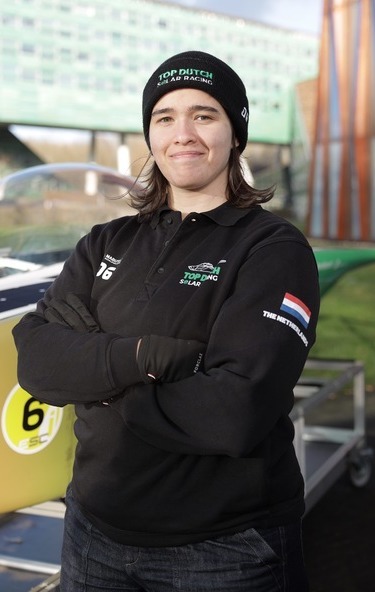
A particularly notable contribution comes from Cala González Penagos, a Bachelor’s student in Applied Physics at the University of Groningen. She designed the aerodynamic shell of the Green Falcon, drawing inspiration from an innovative catamaran form. Cala has since advanced to the role of technical lead and is also serving as safety officer during the race. Thanks to her design, the car is able to travel through the unpredictable Australian outback with maximum efficiency.
26 & 27 August | Top Dutch Solar Racing continues to battle it out in the outback
26 & 27 August | Top Dutch Solar Racing continues to battle it out in the outback
597 kilometres to go
After four days and more than 2,400 kilometres through the Australian outback, the team is currently in 11th place out of the 34 participating teams.
Day 3
On day 3, after some back-and-forth overtaking, the Green Falcon dropped one position from 10th to 11th. The team crossed the border from North to South Australia. Apart from a few technical problems with the truck, the solar car itself was able to drive non-stop all day. At the mandatory control stops, the team still encountered other teams, a sign that the competition remains close.
Day 4
Day 4 brought cloudy weather, which meant that speeds were relatively low at around 70 km/h. Nevertheless, Top Dutch managed to reach two more control stops. There are still 597 kilometres to go to the finish in Adelaide, but the weather forecast predicts rain. According to the strategists' calculations, the team will only have a few minutes to spare on day 5 to finish before the 5 p.m. deadline. The whole team is going all out to finish within five race days and continues to chase to improve its position.
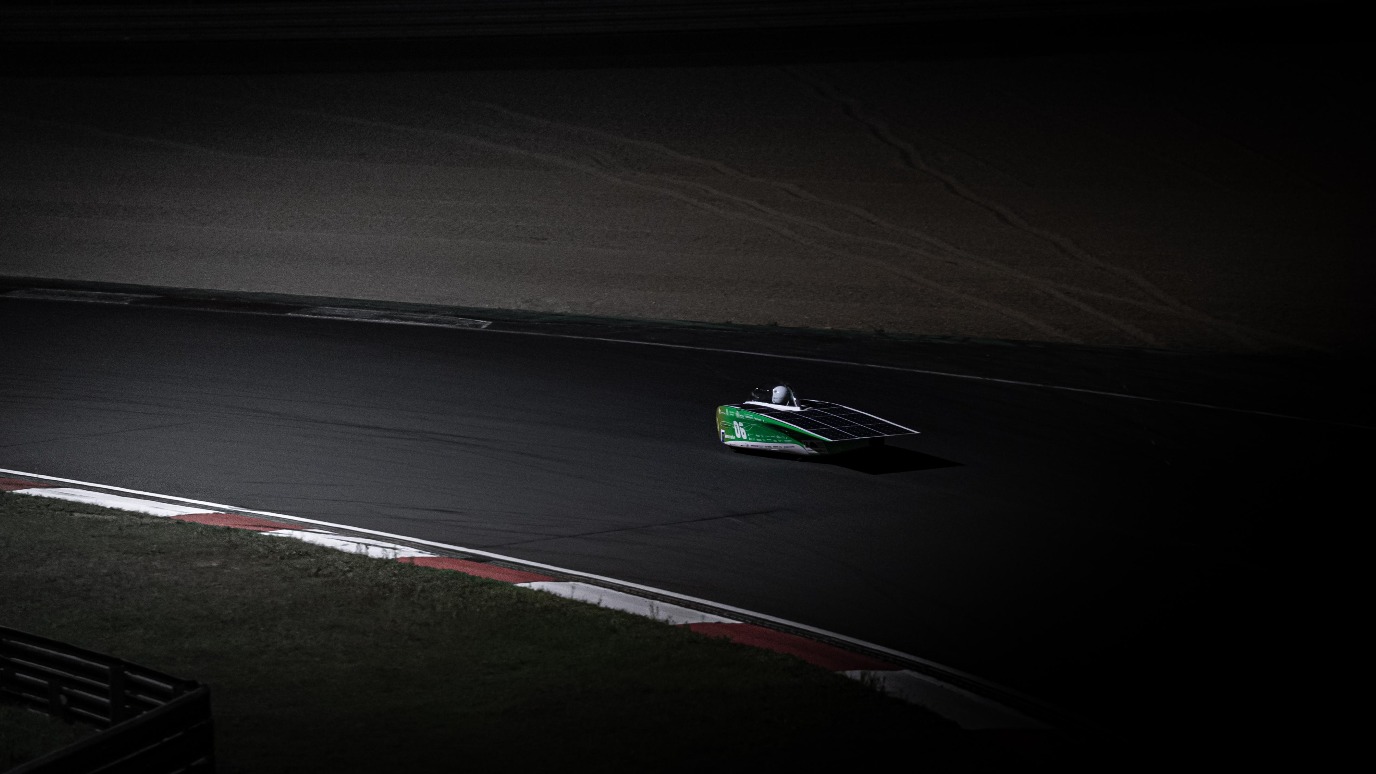
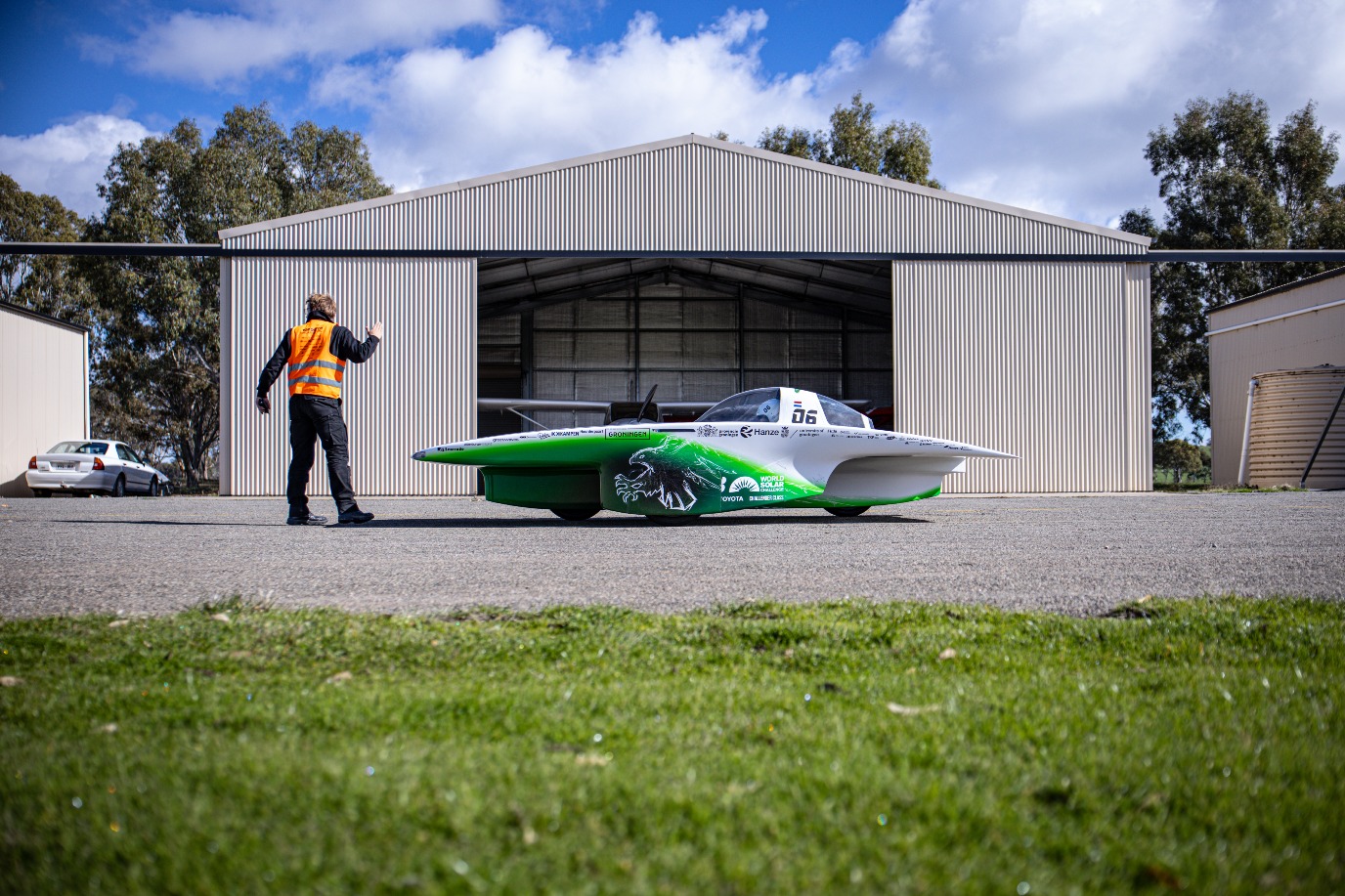
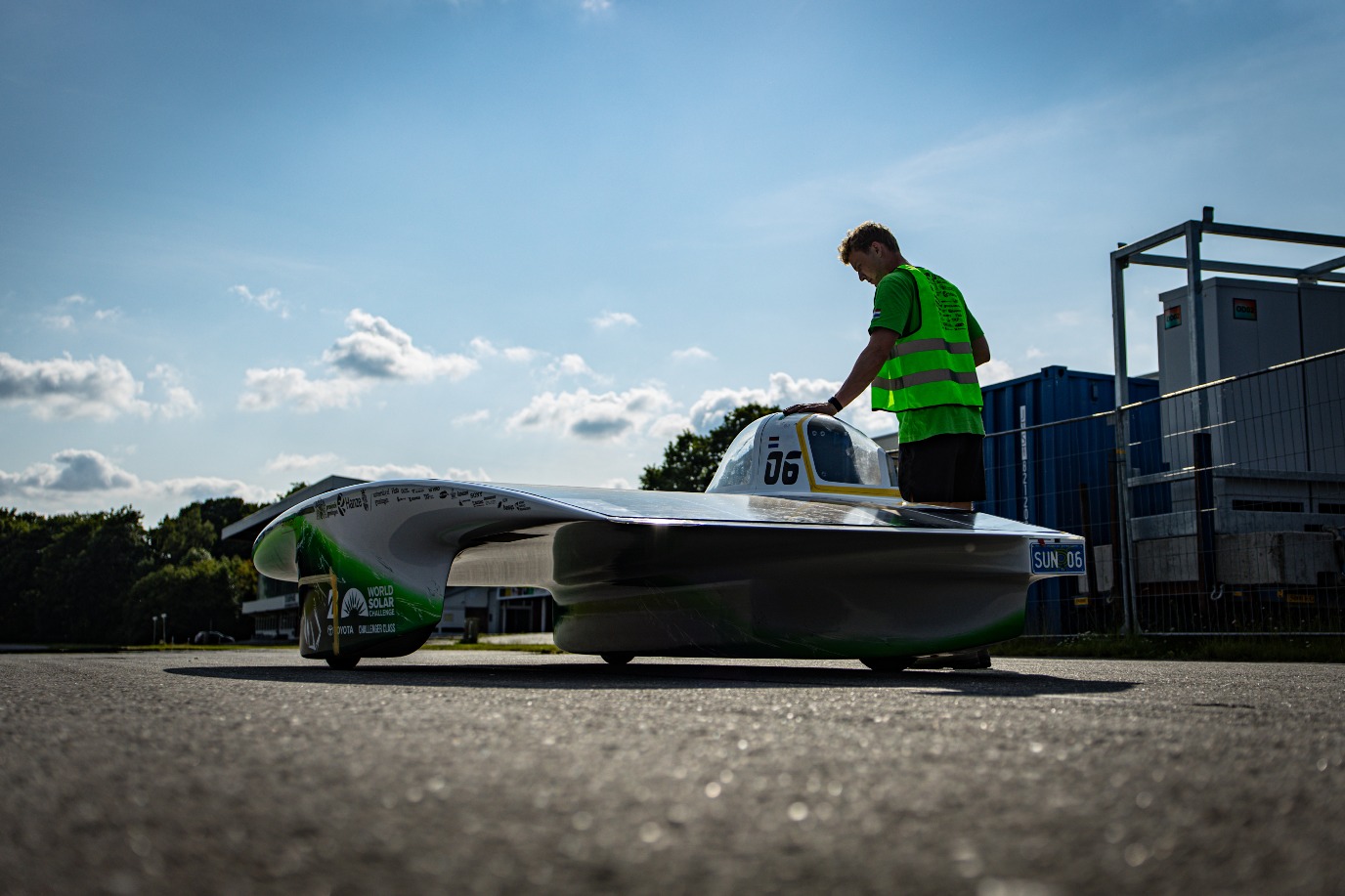
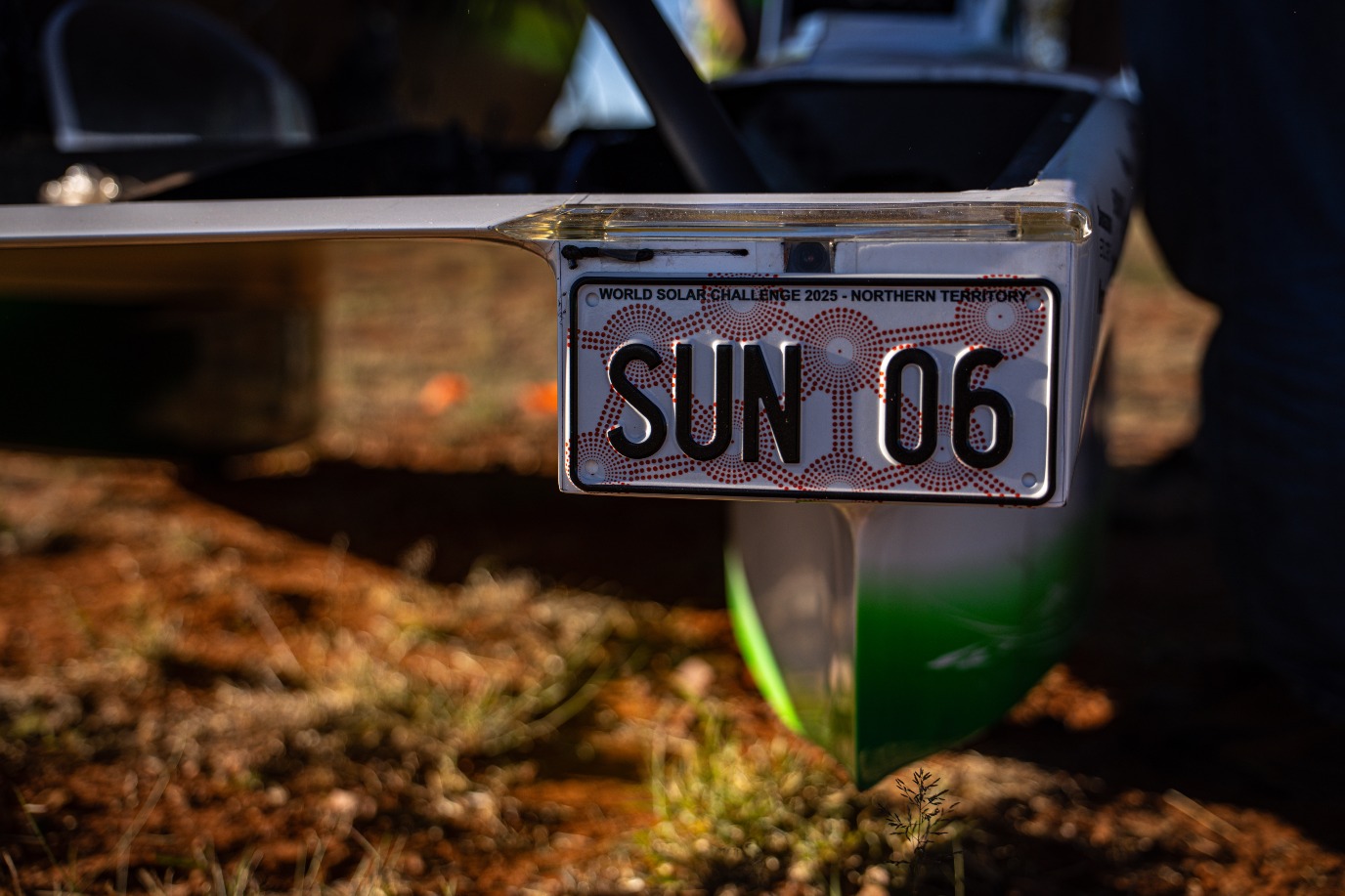
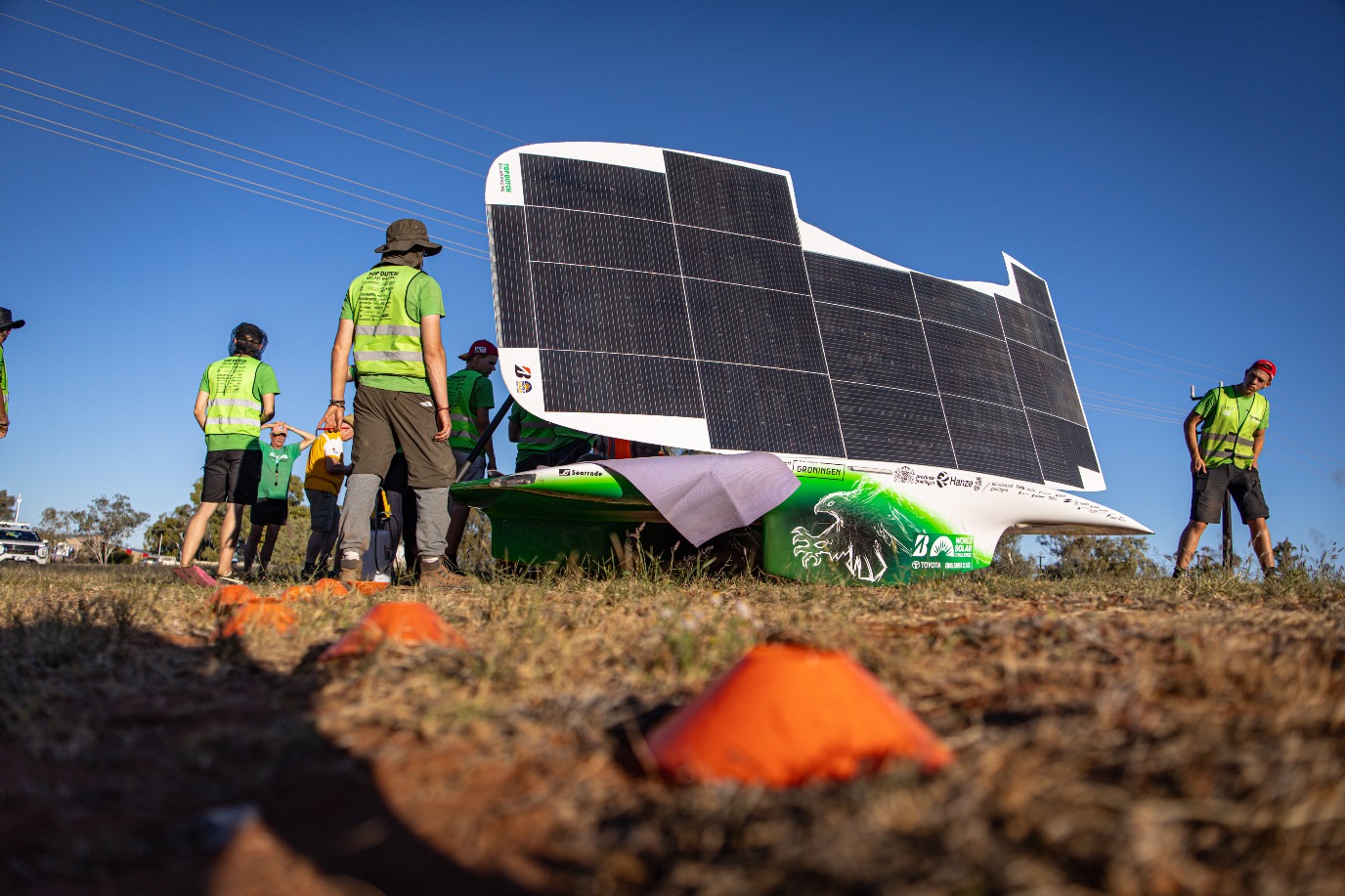
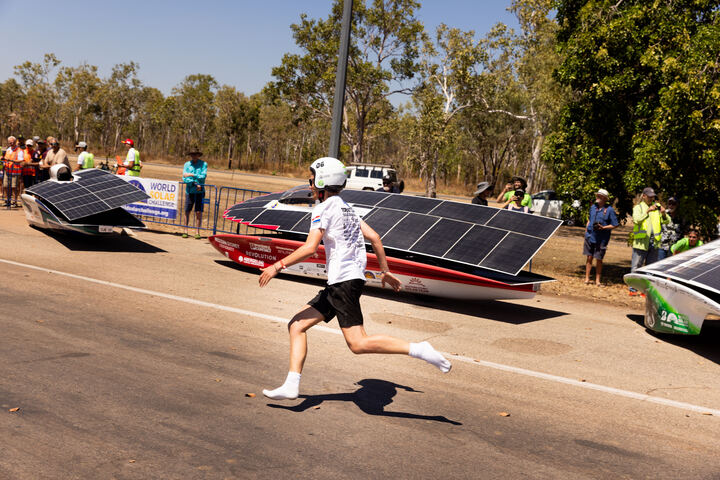
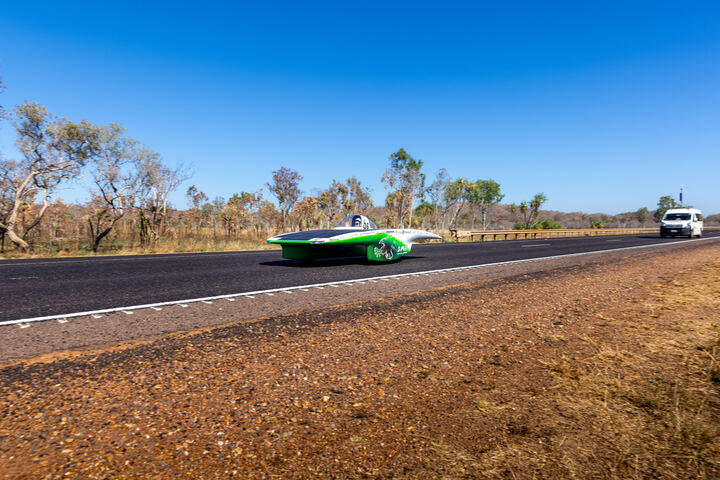
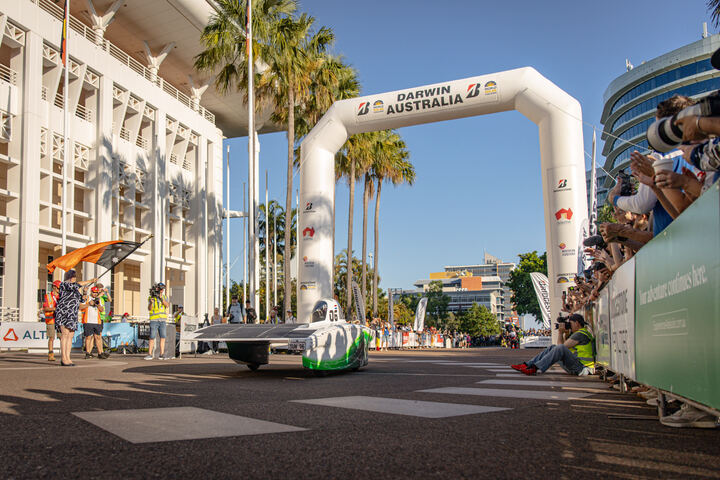
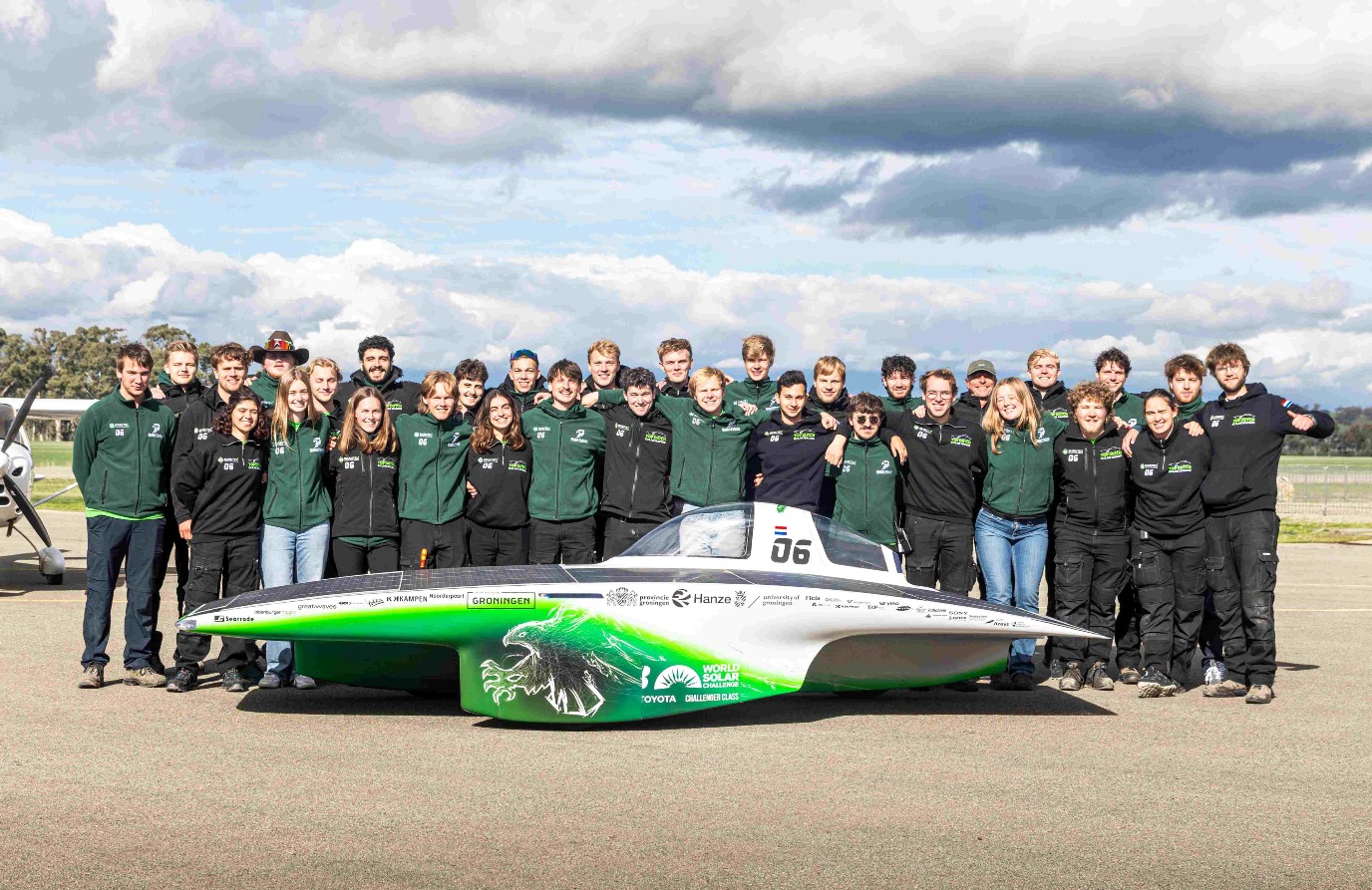
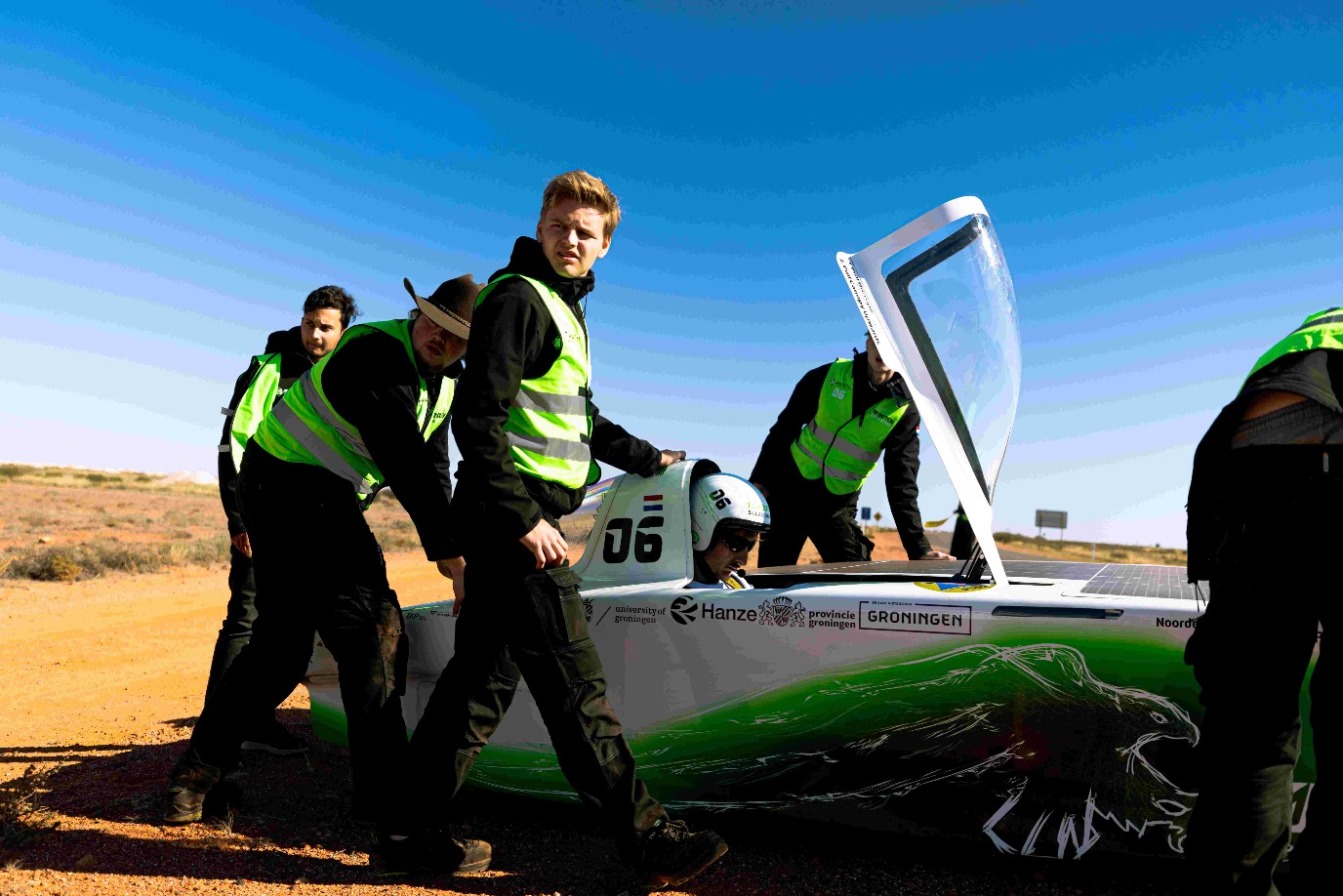
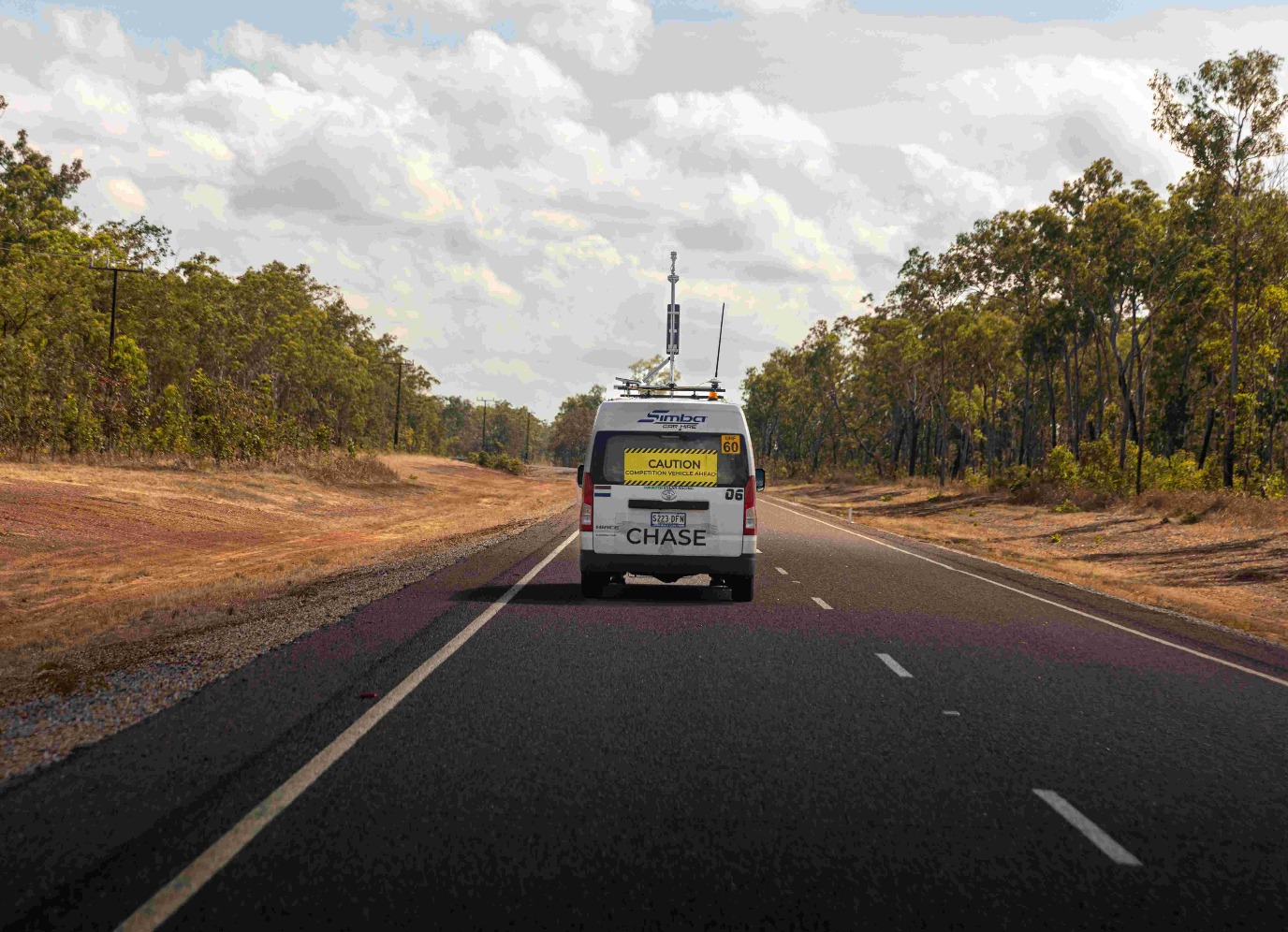
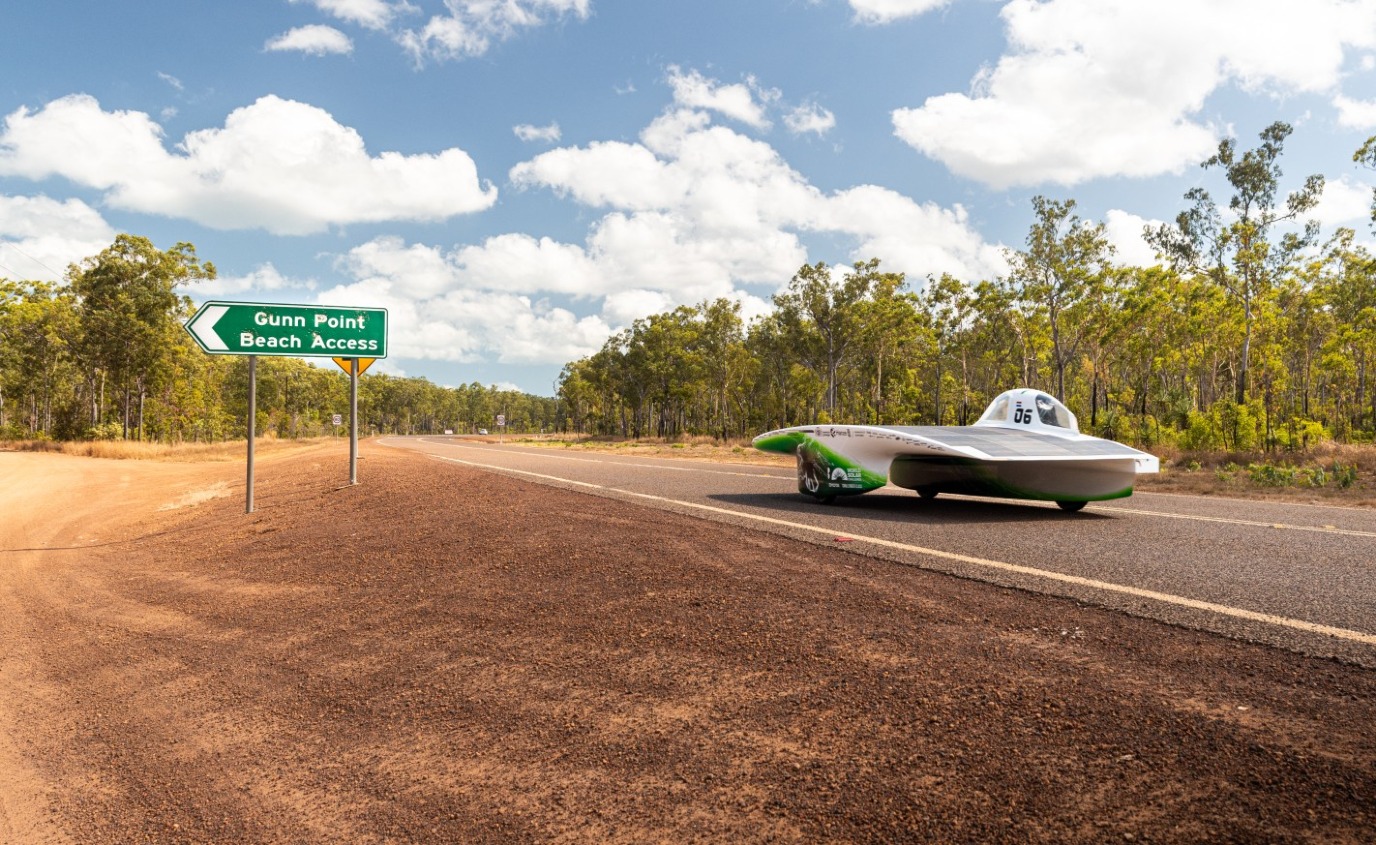
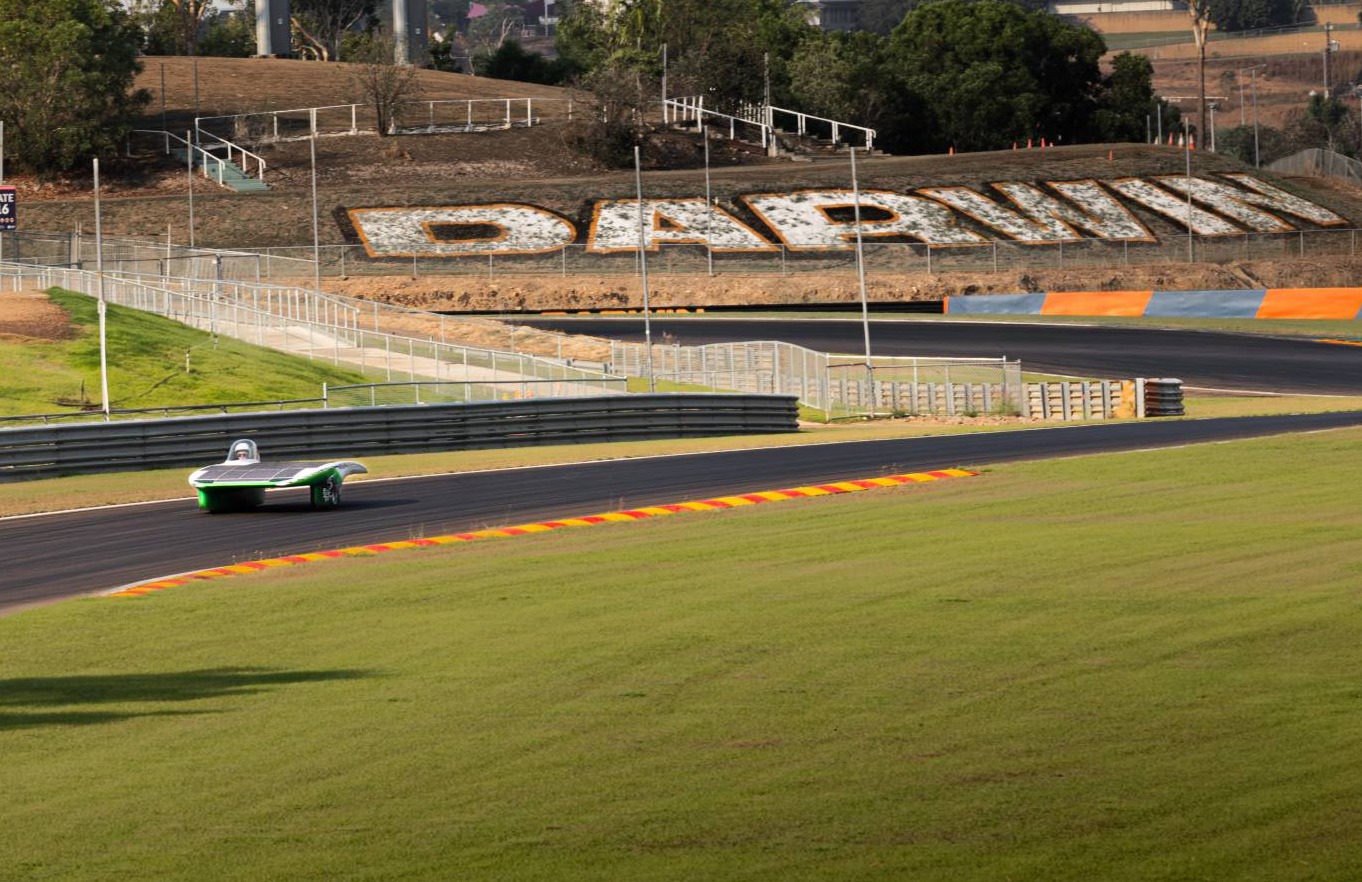
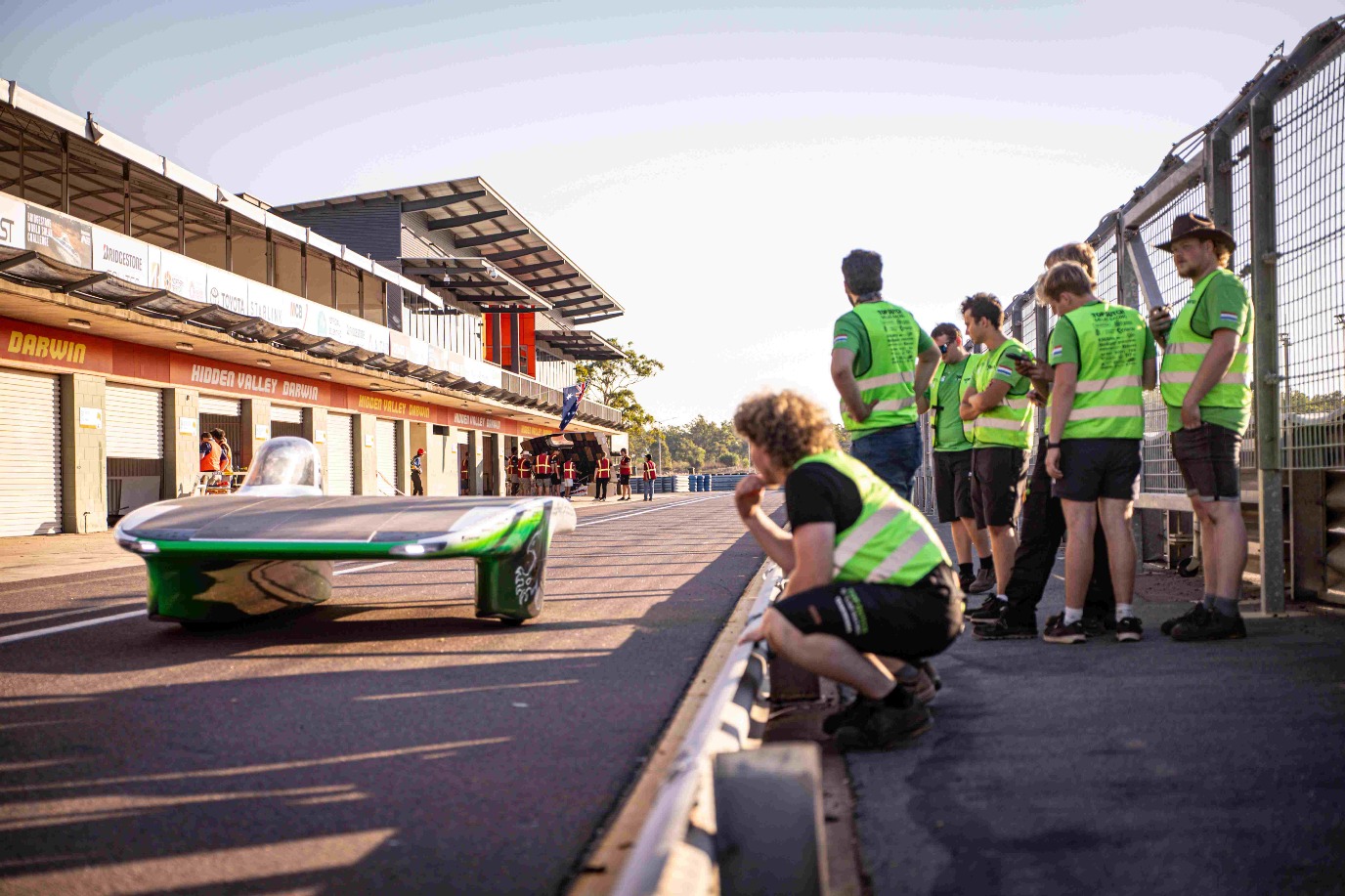

About Top Dutch Solar Racing
Top Dutch Solar Racing is a multidisciplinary solar racing team from the Northern Netherlands. Established in 2017, the team welcomes a new group of students from the University of Groningen, Hanze University of Applied Sciences, Alfa College, and Noorderpoort to take on the challenge of building a solar car every two years. They race in the Bridgestone World Solar Challenge (BWSC) in Australia with their self-made car. In addition to building a solar car, the team also takes care of everything related to their communication, sponsorship, and logistics for the trip.
Top Dutch Solar Racing is competing this edition with the Green Falcon, a completely new car adapted to this year’s regulations and latest developments. The team has decided that the Green Falcon would deliver the best results with a catamaran design.
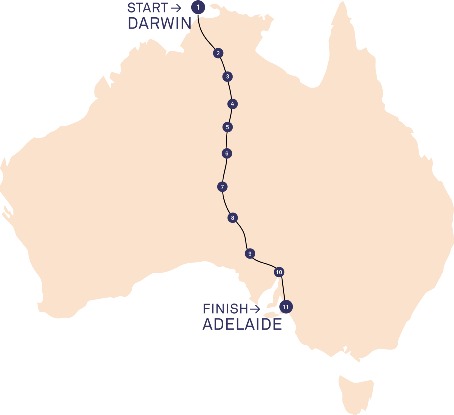
About the Bridgestone World Solar Challenge
Every two years, the Bridgestone World Solar Challenge and spans over 3,000 kilometres across the Australian outback. It starts in Darwin and runs along the Stuart Highway through Alice Springs to Adelaide. Only solar-powered cars take part in the race and they compete in two different classes. Top Dutch Solar Racing competes in the class that is focused on speed, the Formula 1 of solar racing.
More information
More news
-
02 December 2025
Student Menna Zahran wins Unilever Research Prize
-
27 November 2025
Aeroplane spotting using a radio telescope
-
26 November 2025
Why are shiny colours rare yet widespread in nature?
